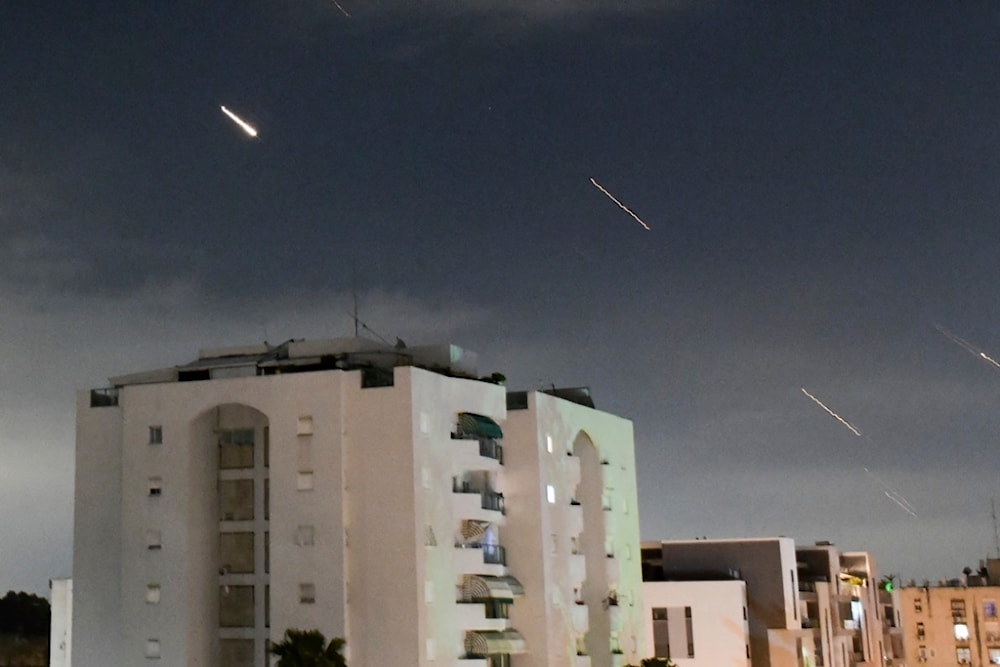Iran's retaliatory attack on 'Israel' shatters power balance: NYT
Reports indicated that the attack involved 185 drones, 36 cruise missiles and 110 surface-to-surface missiles launched from Iran.
-

The Israeli military says Iran fired more than 100 drones toward the occupied territories on April 13th, 2024 (AP)
A report by the New York Times on Sunday detailed that Iran's recent retaliatory attack on "Israel" marked a significant departure from the typical balance of power.
According to writer Jin Yu Young, Iran's weaponry displayed a higher level of sophistication and range than initially expected.
While "Israel" had been accustomed to facing relatively short-range and less advanced rockets from the Palestinian resistance, Iran introduced weapons capable of traveling much farther and faster.
The arsenal deployed by Iran included drones and missiles, with some possessing significantly extended ranges compared to previous attacks encountered by "Israel."
Despite the advanced capabilities of these weapons, "Israel" claimed to have intercepted the majority of the incoming missiles and drones, with assistance from US forces.
Read more: Any Israeli response will be met with a harsher, stronger one: Raisi
Reports indicated that the attack involved 185 drones, 36 cruise missiles, and 110 surface-to-surface missiles launched from Iran.
Analysts identified specific Iranian-developed weaponry, such as the Paveh 351 cruise missile, which possesses a range exceeding 1,200 miles, allowing it to reach "Israel" from Iranian territory.
Variants of this missile were reportedly supplied to groups like Ansar Allah in Yemen and the Al-Nusra Front in Iraq, western weapons expert Fabian Hinz claims.
What type of cruise missile is Iran using in its attack on Israel? The most likely candidate is the IRGC-developed Paveh / 351 which has the range to hit Israel from Iran. The missile (in different versions) has also been provided to the Yemeni Houthis and the Iraqi PMF. pic.twitter.com/UAUlmrzalt
— Fabian Hinz (@fab_hinz) April 14, 2024
Weapons experts have also pointed out Iran's growing arsenal of ballistic missiles and drones and the country's focus on developing long-range capabilities for deterrence and strategic influence.
Despite possessing smaller explosive payloads compared to missiles, drones offer advantages in terms of maneuverability and target selection.
Iran's status as a major arms exporter is further discussed as its ballistic missile and drone technologies increasingly expand in global markets.
Read more: US, 'Israel' failed to stop Iran from attacking: INSS

 2 Min Read
2 Min Read








